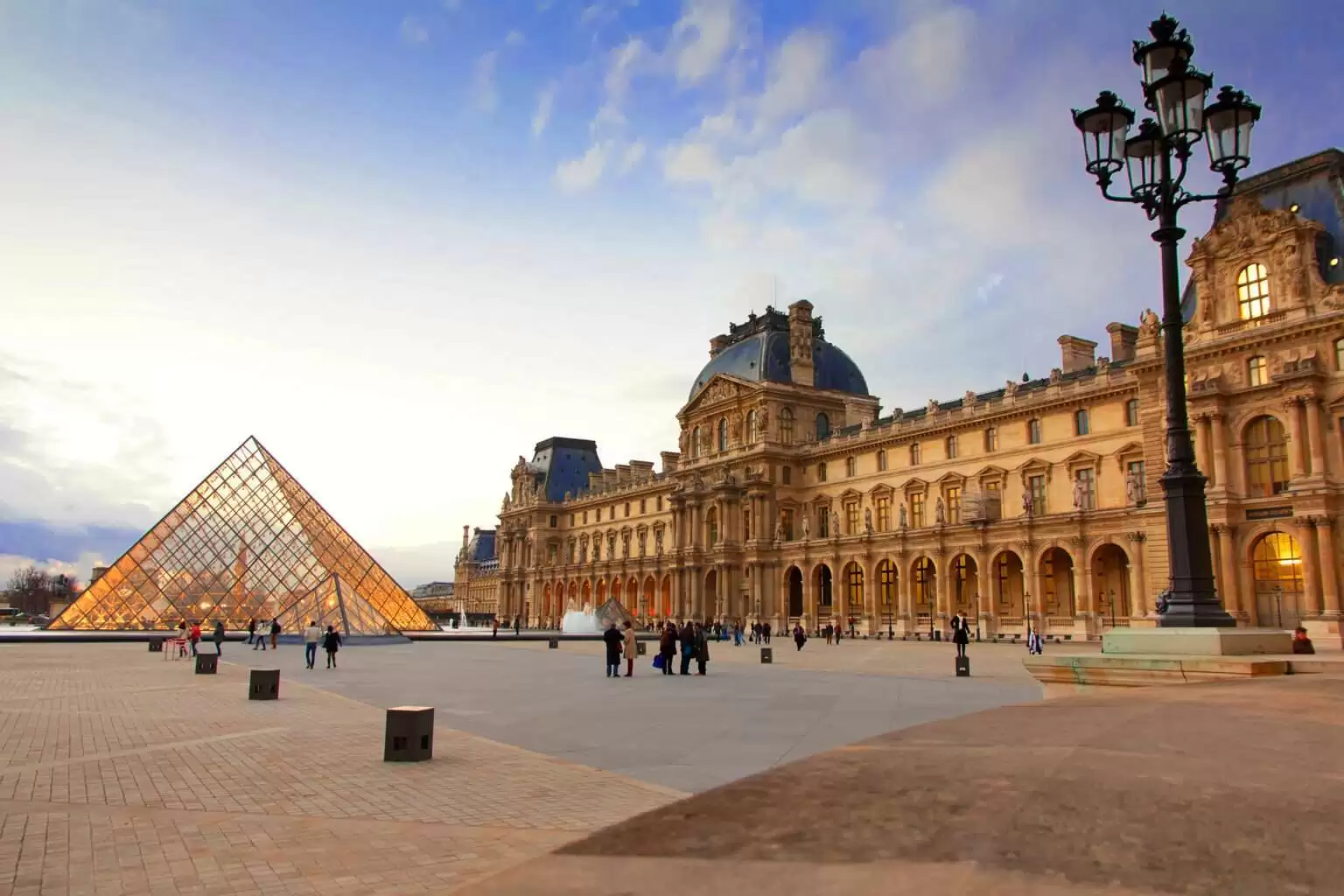
By Masha Lee
Through the ages, art has shaped the very fabric of our society. The buildings that house these works are shrines to human thought and experience. Art museums are monuments to what man has achieved and what he aspires to achieve. They are a testimony to man’s desire to be more than himself. – Mark Bouton
Spending time at one of the numerous museums is perhaps one of he most worthwhile activities to do while travelling in in the west. But while visiting a museum can be a culturally enriching part of ones travel itinerary, as the name suggests, this can truly be a divine experience.
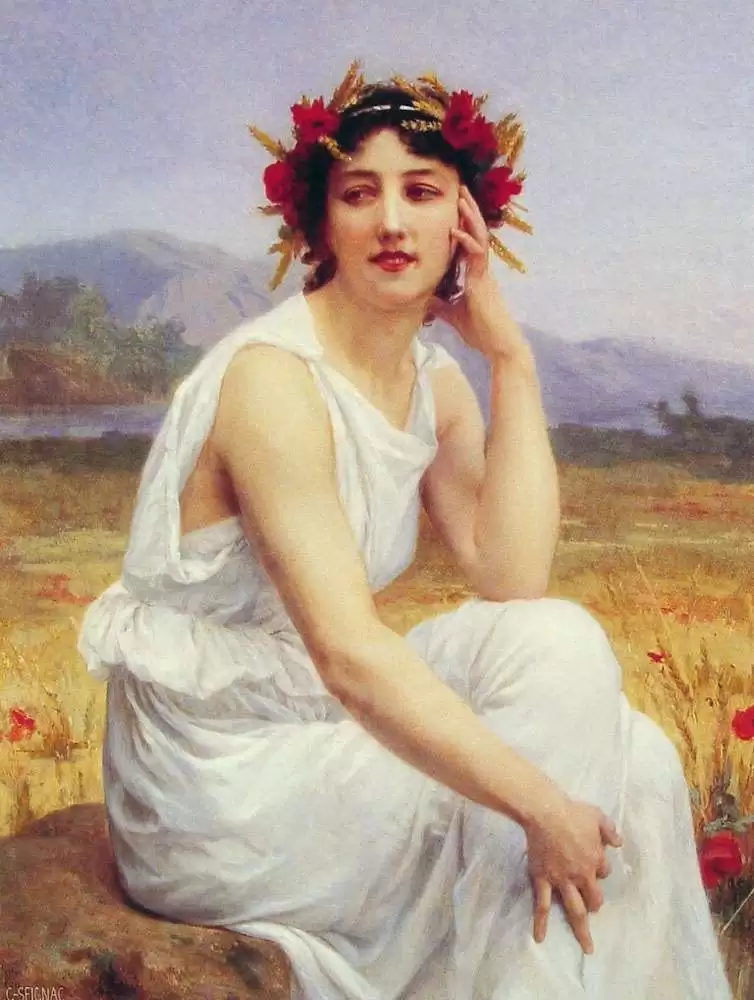
In fact, the name ‘museum’ comes from the worship of ancient Greek goddesses. The muses were nine sister goddesses, each ruling a particular aspect of knowledge or skill, in the arts, mathematics, and sciences, for which they offered inspiration.
The word museum is derived from the Latin word meaning “a place devoted to the Muses”.
The Metropolitan museum of art in NYC, the National Gallery in DC and the Getty in LA are some of the great destinations to see art in major US cities.
But perhaps the most famous of all art museums is the Louvre in Paris, housing the visual/pectoral history of humankind.
But what if, one day, all the art would be destroyed, and lost to the world’s people forever? What if the Louve’s walls were empty, its hallways and great rooms bare?
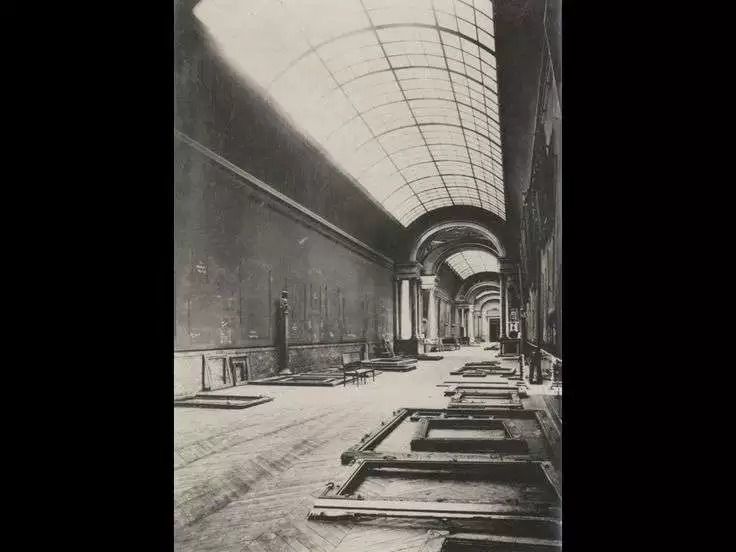
During WW ll however, this was the case, the great art collections were stolen, hidden and destroyed all over Europe on Hitler’s orders, and this work was in danger of being lost forever.
Among these pieces were
The efforts of a few committed and brave art experts, understanding the fundamental importance of art to culture, however, ensured that this legacy would be here for us today, the people of the world. 345 men and women, museum directors, curators, art historians, artists, architects, and educators from thirteen nations joined together to serve in the Monuments, Fine Arts, and Archives program, devoted to retrieving and protecting masterpieces stolen by the Nazis. The operation singlehandedly saved 60,000 works of art.
Hitler claimed the salt mines of Altaussee Austria as the perfect hideaway for loot intended for his own grand museum. The orders were given to destroy the art rather that let the fall into enemy hands.
In April of 1945, as the war was nearing an end, eight crates into the mines in April. They were marked “Marble – Do Not Drop,” but actually contained 1,100 pound bombs.
By May 21, 1945, according to Nazi records: 6,577 paintings, 2,300 drawings or watercolors, 954 prints, 137 pieces of sculpture, 129 pieces of arms and armor, 79 baskets of objects, 484 cases of objects thought to be archives, 78 pieces of furniture, 122 tapestries were recovered from Altaussee and eventually returned to their rightful homes.
“Adoration of the Mystic Lamb,” also known as the Ghent Altarpiece, by Jan van Eyck was one of the most notable works found in the Altausse mine.
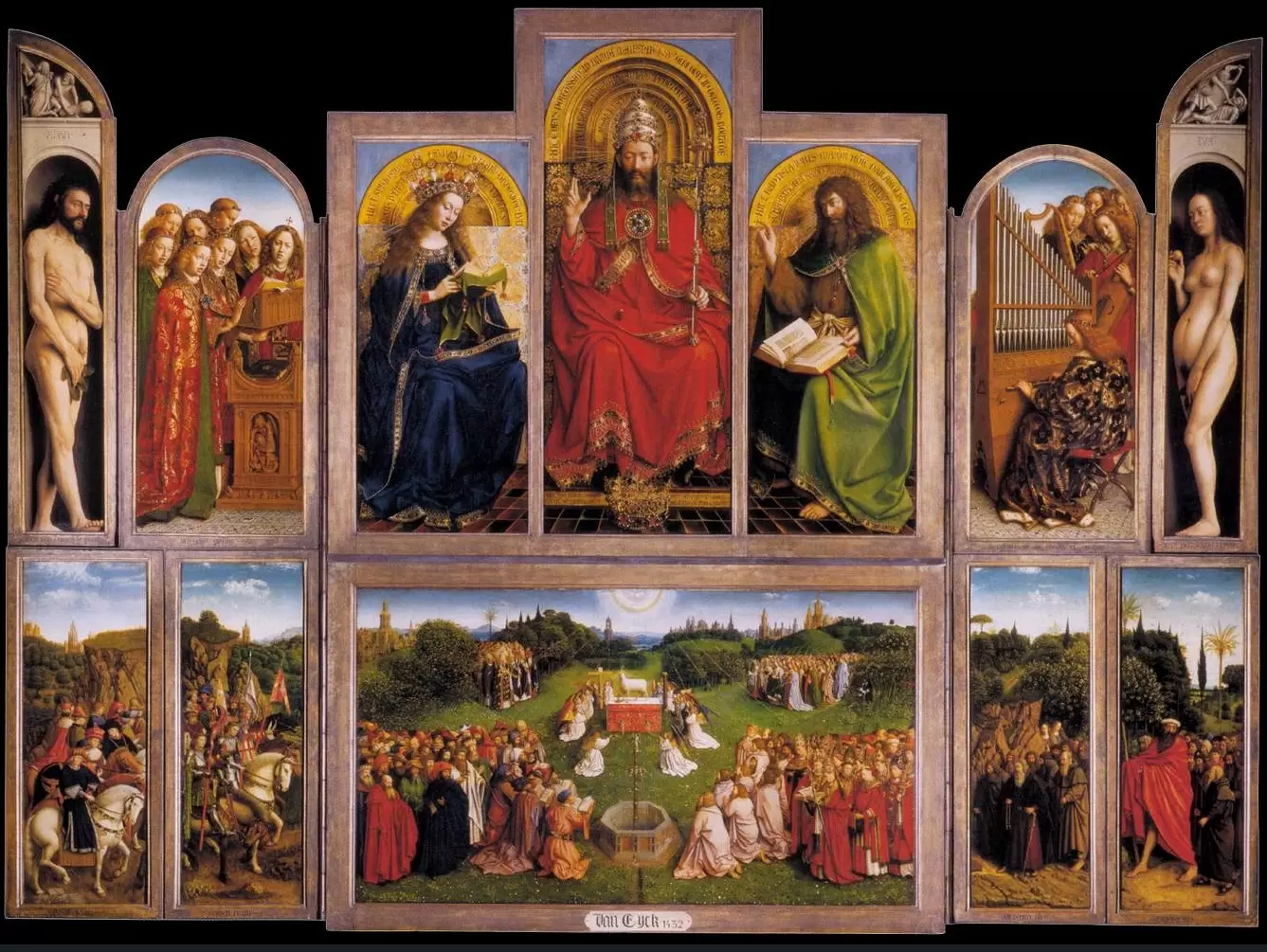
Much of this story, nearly unknown and forgotten, was discovered, researched and recorded by Lynn H
Nicholas, in her 1995 book, The Rape of Europa.
In recent years, this story has gained interest from films like the star packed Monuments Men, and Russian historical filmmaker Alexander Sokurov who conveys his personal perspective in his art house documentary, Francofonia, released this year.
“What is the Louvre? asks Sokurov in his film.
“What faces, what souls!
The human search for form, the discovery of the soul.
“Who would I be,
“Had I never seen the eyes of those who lived before me.”
Chinese people know all too well about this phenomenon. Similarly, a plethora of art was intentionally destroyed during the cultural revolution. The results of taking away art from people is to cut off their roots to their past, and roots to a tree is its nurturing life force.
The lead character, Frank stokes, played by George Clooney in The Monuments Men film says, ‘You can wipe out an entire generation, you can burn their homes to the ground and somehow they’ll still find their way back. But if you destroy their history, you destroy their achievements and it’s as if they never existed. That’s what Hitler wants and that’s exactly what we are fighting for.’
There is no better way to affirm that Good triumphs over Evil and the divine essence of an art museum that house the story of mankind and its striving for beauty, than to visit a museum. Visit a museum, sit with its work, be enthralled by the human spirit and its remarkable achievements. Perhaps you will fall in love with an artist’s work, and maybe for a brief moment, you will feel that you have been kissed by a muse.







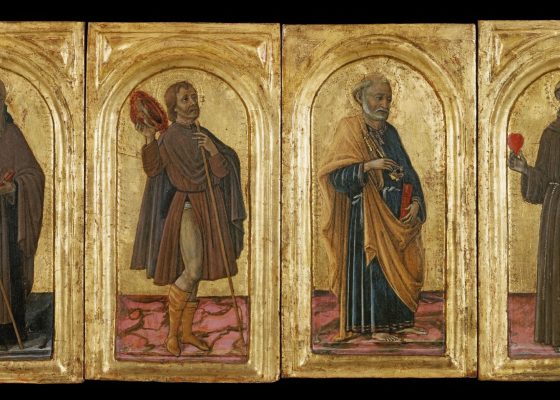
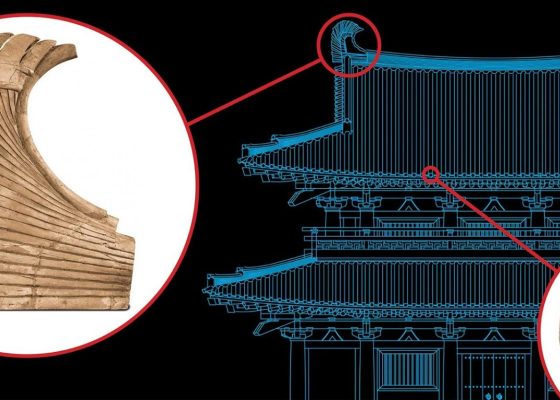



Cancel anytime


Using our website
You may use the The Middle Land website subject to the Terms and Conditions set out on this page. Visit this page regularly to check the latest Terms and Conditions. Access and use of this site constitutes your acceptance of the Terms and Conditions in-force at the time of use.
Intellectual property
Names, images and logos displayed on this site that identify The Middle Land are the intellectual property of New San Cai Inc. Copying any of this material is not permitted without prior written approval from the owner of the relevant intellectual property rights.
Requests for such approval should be directed to the competition committee.
Please provide details of your intended use of the relevant material and include your contact details including name, address, telephone number, fax number and email.
Linking policy
You do not have to ask permission to link directly to pages hosted on this website. However, we do not permit our pages to be loaded directly into frames on your website. Our pages must load into the user’s entire window.
The Middle Land is not responsible for the contents or reliability of any site to which it is hyperlinked and does not necessarily endorse the views expressed within them. Linking to or from this site should not be taken as endorsement of any kind. We cannot guarantee that these links will work all the time and have no control over the availability of the linked pages.
Submissions
All information, data, text, graphics or any other materials whatsoever uploaded or transmitted by you is your sole responsibility. This means that you are entirely responsible for all content you upload, post, email or otherwise transmit to the The Middle Land website.
Virus protection
We make every effort to check and test material at all stages of production. It is always recommended to run an anti-virus program on all material downloaded from the Internet. We cannot accept any responsibility for any loss, disruption or damage to your data or computer system, which may occur while using material derived from this website.
Disclaimer
The website is provided ‘as is’, without any representation or endorsement made, and without warranty of any kind whether express or implied.
Your use of any information or materials on this website is entirely at your own risk, for which we shall not be liable. It is your responsibility to ensure any products, services or information available through this website meet your specific requirements.
We do not warrant the operation of this site will be uninterrupted or error free, that defects will be corrected, or that this site or the server that makes it available are free of viruses or represent the full functionality, accuracy and reliability of the materials. In no event will we be liable for any loss or damage including, without limitation, loss of profits, indirect or consequential loss or damage, or any loss or damages whatsoever arising from the use, or loss of data, arising out of – or in connection with – the use of this website.
Last Updated: September 11, 2024
New San Cai Inc. (hereinafter “The Middle Land,” “we,” “us,” or “our”) owns and operates www.themiddleland.com, its affiliated websites and applications (our “Sites”), and provides related products, services, newsletters, and other offerings (together with the Sites, our “Services”) to art lovers and visitors around the world.
This Privacy Policy (the “Policy”) is intended to provide you with information on how we collect, use, and share your personal data. We process personal data from visitors of our Sites, users of our Services, readers or bloggers (collectively, “you” or “your”). Personal data is any information about you. This Policy also describes your choices regarding use, access, and correction of your personal information.
If after reading this Policy you have additional questions or would like further information, please email at middleland@protonmail.com.
PERSONAL DATA WE COLLECT AND HOW WE USE IT
We collect and process personal data only for lawful reasons, such as our legitimate business interests, your consent, or to fulfill our legal or contractual obligations.
Information You Provide to Us
Most of the information Join Talents collects is provided by you voluntarily while using our Services. We do not request highly sensitive data, such as health or medical information, racial or ethnic origin, political opinions, religious or philosophical beliefs, trade union membership, etc. and we ask that you refrain from sending us any such information.
Here are the types of personal data that you voluntarily provide to us:
As a registered users or customers, you may ask us to review or retrieve emails sent to your business. We will access these emails to provide these services for you.
We use the personal data you provide to us for the following business purposes:
Information Obtained from Third-Party Sources
We collect and publish biographical and other information about users, which we use to promote the articles and our bloggers who use our sites. If you provide personal information about others, or if others give us your information, we will only use that information for the specific reason for which it was provided.
Information We Collect by Automated Means
Log Files
The site uses your IP address to help diagnose server problems, and to administer our website. We use your IP addresses to analyze trends and gather broad demographic information for aggregate use.
Every time you access our Site, some data is temporarily stored and processed in a log file, such as your IP addresses, the browser types, the operating systems, the recalled page, or the date and time of the recall. This data is only evaluated for statistical purposes, such as to help us diagnose problems with our servers, to administer our sites, or to improve our Services.
Do Not Track
Your browser or device may include “Do Not Track” functionality. Our information collection and disclosure practices, and the choices that we provide to customers, will continue to operate as described in this Privacy Policy, whether or not a “Do Not Track” signal is received.
HOW WE SHARE YOUR INFORMATION
We may share your personal data with third parties only in the ways that are described in this Privacy Policy. We do not sell, rent, or lease your personal data to third parties, and We does not transfer your personal data to third parties for their direct marketing purposes.
We may share your personal data with third parties as follows:
There may be other instances where we share your personal data with third parties based on your consent.
HOW WE STORE AND SECURE YOUR INFORMATION
We retain your information for as long as your account is active or as needed to provide you Services. If you wish to cancel your account, please contact us middleland@protonmail.com. We will retain and use your personal data as necessary to comply with legal obligations, resolve disputes, and enforce our agreements.
All you and our data are stored in the server in the United States, we do not sales or transfer your personal data to the third party. All information you provide is stored on a secure server, and we generally accepted industry standards to protect the personal data we process both during transmission and once received.
YOUR RIGHTS/OPT OUT
You may correct, update, amend, delete/remove, or deactivate your account and personal data by making the change on your Blog on www.themiddleland.com or by emailing middleland@protonmail.com. We will respond to your request within a reasonable timeframe.
You may choose to stop receiving Join Talents newsletters or marketing emails at any time by following the unsubscribe instructions included in those communications, or you can email us at middleland@protonmail.com
LINKS TO OTHER WEBSITES
The Middle Land include links to other websites whose privacy practices may differ from that of ours. If you submit personal data to any of those sites, your information is governed by their privacy statements. We encourage you to carefully read the Privacy Policy of any website you visit.
NOTE TO PARENTS OR GUARDIANS
Our Services are not intended for use by children, and we do not knowingly or intentionally solicit data from or market to children under the age of 18. We reserve the right to delete the child’s information and the child’s registration on the Sites.
PRIVACY POLICY CHANGES
We may update this Privacy Policy to reflect changes to our personal data processing practices. If any material changes are made, we will notify you on the Sites prior to the change becoming effective. You are encouraged to periodically review this Policy.
HOW TO CONTACT US
If you have any questions about our Privacy Policy, please email middleland@protonmail.com
The Michelin brothers created the guide, which included information like maps, car mechanics listings, hotels and petrol stations across France to spur demand.
The guide began to award stars to fine dining restaurants in 1926.
At first, they offered just one star, the concept was expanded in 1931 to include one, two and three stars. One star establishments represent a “very good restaurant in its category”. Two honour “excellent cooking, worth a detour” and three reward “exceptional cuisine, worth a
Thank you for your participation,
please Log in or Sign up to Vote

123Sign in to your account